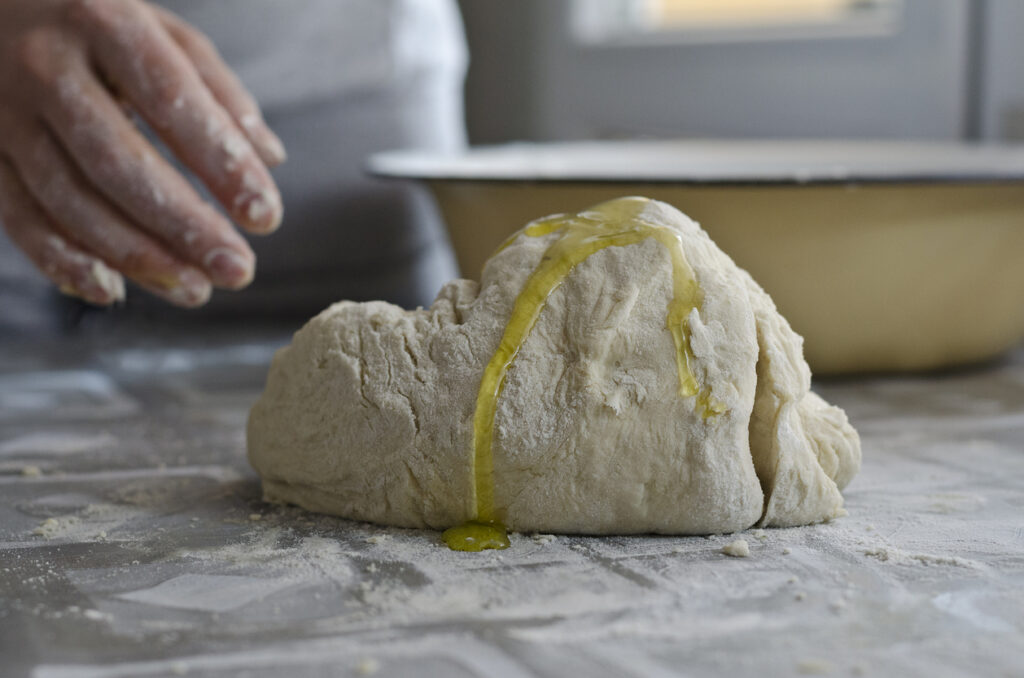- General
The awesome flavour of focaccia – and why flavour matters

Someone we know calls the flavour of runner beans ‘hard, flat and grey’, which is meaningless to everyone except herself. If you can describe flavours fluently, you’re a genius. It’s surprisingly hard.
The best our brains can do is talk about a flavour in the context of its ingredients, decide whether it’s sweet, savoury or somewhere in between, and compare it to similar tasting or textured foods.
We thought we’d have a go at describing what focaccia tastes like, and take a voyage of discovery into why flavour matters.
All sorts of amazing focaccias
There are many versions of focaccia. Focaccia genovese comes with unusually large holes on the surface, brushed or sprinkled with olive oil and coarse salt before the final rise. The Ligurian coast is home to biscuit-like focaccia secca and the soft and oily Voltri version. Focaccia col formaggio features stracchino cheese between two layers of very thin dough. Then there are sweet focaccias and the versions we’re most familiar with in the UK, enhanced with olives, sage, sundried tomato, oregano, rosemary, and basil.
Sadly none of these descriptions tell us much about what the bread itself tastes like.
Describing the flavour of focaccia
Our large focaccia sheet is made from strong flour, yeast, salt, water and British extra-virgin rapeseed oil. But it doesn’t taste like any of these things. Combined and baked, the bread is a whole lot more than the sum of the parts, which means it isn’t much help to know the ingredients. It is definitely savoury. But comparison-wise, focaccia doesn’t really taste like any other bread.
We scoured the internet and found that nobody has described the flavour of focaccia to any level of detail. After much head-scratching, our best effort so far is ‘chewy and mildly salty with a nutty edge, a hint of fresh olive oil, and a distinct floury scent’. It feels like it matters, and it does. The flavour of food is more important than we might think.
How flavours change attitudes
A team at the University of Sussex has taken a look at how flavours affect a person’s attitude to risk. The results showed how sweet and umami flavours drove conservative thinking, while sour flavours were responsible for riskier behaviour. Another study showed how bitter tastes can make us feel more judgemental. And we’ve met someone who always gets angry after eating hot and spicy food. Could eating sourdough bread make you more adventurous? Might your next curry end in tears? It’s an interesting thought!
Why some flavours go together better than others
Scientists say the foods that go together best contain the same key aroma molecules. Strawberries, for example, share key aromas with chocolate, basil, and balsamic vinegar. Chefs like Heston Blumenthal and Peter Coucquyt have capitalised on this, as have the Belgian food scientists Bernard Lahousse and Johan Langenbick. Along with Coucquyt, they’ve analysed the chemical profiles of thousands of ingredients. Now their work is being used to make new and exciting molecular pairings for the food sector.
Food without flavour
Thousands of people lost their sense of taste during covid and some haven’t regained it. While it’s notoriously difficult to describe flavours, it’s easy enough to imagine life without them. Lose flavour and you can easily lose your pleasure in food. The textures you didn’t used to notice come to the fore, and some of them are awful. An egg white without egg flavour is like eating rubber. Digestive biscuits feel like sand.
Heavenly wholesale focaccia for foodservice
Let’s celebrate our sense of taste with some wonderful focaccia breads. Our speciality focaccias come with that classic focaccia flavour that complements Mediterranean toasts and deli sandwiches so well. It’s perfect when you love your bread chewy and mildly salty with a nutty edge, a hint of fresh olive oil, and a distinct floury scent. Click below to try some samples for yourself.



